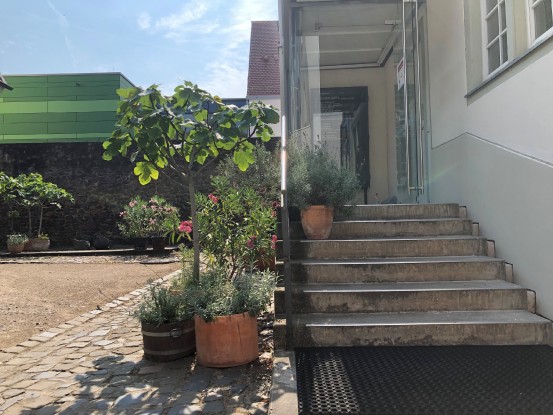Explainable models for human and artificial intelligence (Erklärbare Modelle für menschliche und künstliche Intelligenz)

Funding
LOEWE-Schwerpunktantrag, granted by the Hessisches Ministerium für Wissenschaft und Kunst from 1. 2021 to 12.2024
Consortium
Nine academic partners from different departments of TU Darmstadt are involved in this project. You can see details here,
The LOEWE Research Cluster WhiteBox aims to develop methods at the intersection between Cognitive Science and AI to make human and artificial intelligence more understandable. WhiteBox is a joint project with nine research partners from different departments of TU Darmstadt, from engineering and computer science to human science. Lauflabor group Leads WP3.1 “Man and Machine walk together” in this project which started in 2021. Here we develop the bioinspired human gait models and connect them to robot models. Our research focuses on developing Whitebox biomechanical models of human locomotion and motor control to be integrated with the black-box (learning-based) models for robot control to improve our understanding of locomotion control in humans and robots. The outcomes will be later used to develop bioinspired robots and assistive devices.
Objectives
How can one gain an improved understanding of human walking and understand the systematic adaptation of gait patterns to contexts such as environmental situations? How can movement models be obtained that enable the development of new diagnostics and technical approaches for movement support (e.g. for rehabilitation or training)?
Further Info
Human walking behavior is not sufficiently understood from a biomechanical or behavioral point of view. Prescriptive models can precisely predict gait behavior based on data, while descriptive models (based on biomechanics) can in principle explain gait behavior, but have not yet allowed quantitatively accurate predictions. We aim to combine the positive properties of both approaches by using the approximation capability of the Deep Neural Networks (DNN) as a black box model, combining them with unchangeable physical principles and thus changing the direction of the white box.
Recommended external content
We have selected external content from YouTube for you and would like to show it to you right here. To do this, you must reveal it with one click. You can hide the external content at any time with another click.
I agree to external content from YouTube being shown to me. This may result in personal data being transmitted to third-party platforms. You can find more information in our Privacy Policy.

Objectives
How can one gain an improved understanding of human walking and understand the systematic adaptation of gait patterns to contexts such as environmental situations? How can movement models be obtained that enable the development of new diagnostics and technical approaches for movement support (e.g. for rehabilitation or training)?
Further Info
Human walking behavior is not sufficiently understood from a biomechanical or behavioral point of view. Prescriptive models can precisely predict gait behavior based on data, while descriptive models (based on biomechanics) can in principle explain gait behavior, but have not yet allowed quantitatively accurate predictions. We aim to combine the positive properties of both approaches by using the approximation capability of the Deep Neural Networks (DNN) as a black box model, combining them with unchangeable physical principles and thus changing the direction of the white box.
Open Position
We are seeking highly talented PH.D. STUDENTS with strong interests in the biomechanical modeling and cognitive control on legged locomotion besides at least one of the following research topics:
Human-robot interaction
Bioinspired legged locomotion
Biomechanical modeling of legged systems
Learning in robots
Locomotion modeling
Cognitive robotics
Working with robot systems or assistive devices
Human gait analysis
Brain-computer Interface
Students and researchers from the areas of computer science, robotics, and electrical engineering including system design and control, biomechanics, and learning are welcome to apply. The candidates are expected to conduct independent research and at the same time contribute to ongoing projects in the areas listed above. Successful candidates can furthermore be given the opportunity to work with other Ph.D. candidates, undergraduate and M.Sc. students.
The required language to speak in the lab is English. We do not need TOFEL or IELTS (if you have any certificates, please submit them with other documents), but the quality of your language matters which will be evaluated in the interview at the final round of admission.
How to Apply?
To apply, please send a research statement, a PDF with the CV, degrees, and grade-sheets, the names and contact information of two references, and your strongest publications (up to 3) directly to sharbafi@sport.tu-darmstadt.de by 30.6.2022. Please write this sentence in the subject of your email “Application for Ph.D. in WhitBox project”. The position will be filled as soon as possible. Please explain your research interest and experience, how these relate to Lauflabor and WhiteBox project and how they relate to the topics listed above, in your research statement.



